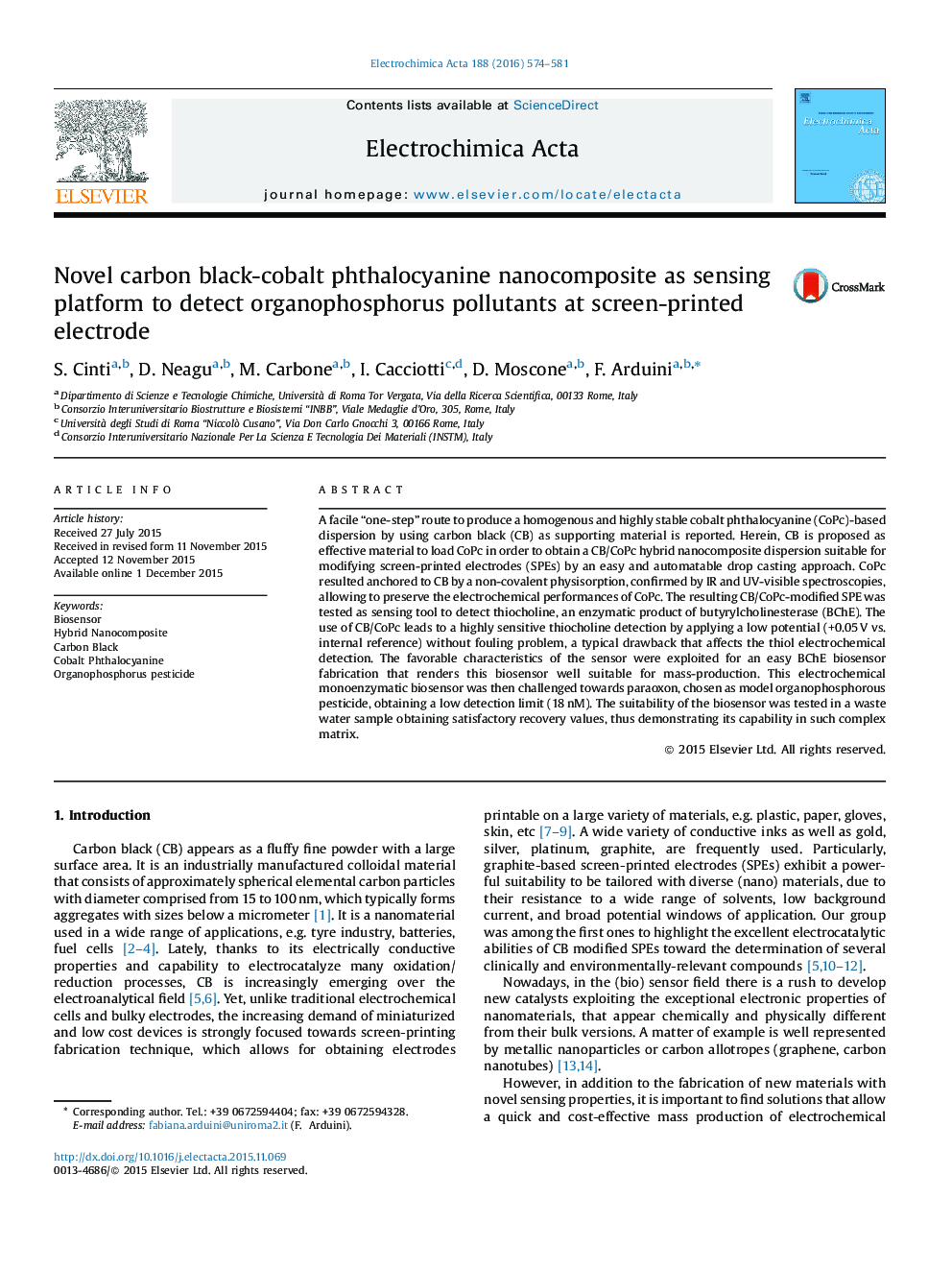| Article ID | Journal | Published Year | Pages | File Type |
|---|---|---|---|---|
| 183391 | Electrochimica Acta | 2016 | 8 Pages |
A facile “one-step” route to produce a homogenous and highly stable cobalt phthalocyanine (CoPc)-based dispersion by using carbon black (CB) as supporting material is reported. Herein, CB is proposed as effective material to load CoPc in order to obtain a CB/CoPc hybrid nanocomposite dispersion suitable for modifying screen-printed electrodes (SPEs) by an easy and automatable drop casting approach. CoPc resulted anchored to CB by a non-covalent physisorption, confirmed by IR and UV-visible spectroscopies, allowing to preserve the electrochemical performances of CoPc. The resulting CB/CoPc-modified SPE was tested as sensing tool to detect thiocholine, an enzymatic product of butyrylcholinesterase (BChE). The use of CB/CoPc leads to a highly sensitive thiocholine detection by applying a low potential (+0.05 V vs. internal reference) without fouling problem, a typical drawback that affects the thiol electrochemical detection. The favorable characteristics of the sensor were exploited for an easy BChE biosensor fabrication that renders this biosensor well suitable for mass-production. This electrochemical monoenzymatic biosensor was then challenged towards paraoxon, chosen as model organophosphorous pesticide, obtaining a low detection limit (18 nM). The suitability of the biosensor was tested in a waste water sample obtaining satisfactory recovery values, thus demonstrating its capability in such complex matrix.
Graphical abstractFigure optionsDownload full-size imageDownload as PowerPoint slide
